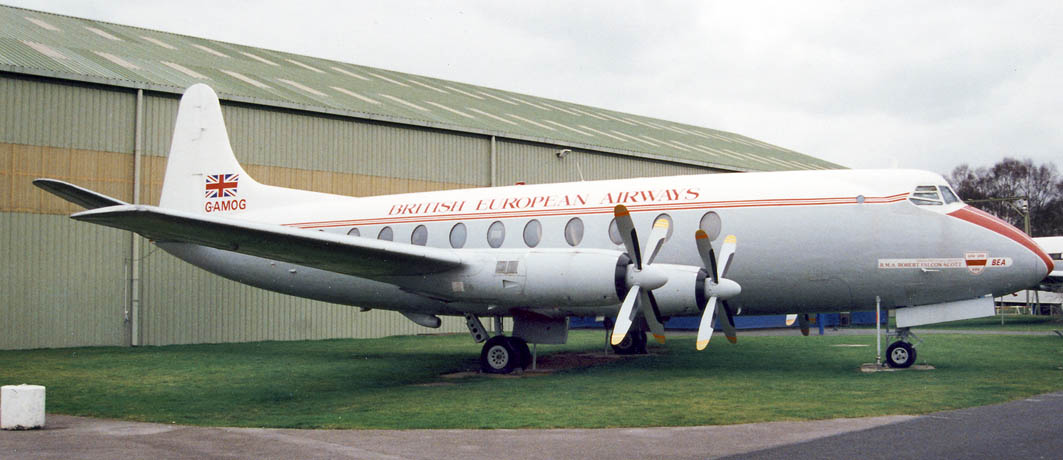
Vickers Viscount
 |
| Viscount 701 G-AMOG, construction number 7, was the sixth completed and was preserved at Cosford before being moved to the Museum Of Flight in Scotland. |
| Conceived
in the Second World War as one of a number of air transport types the
Government's Brabazon Committee believed would be needed when peace
returned, the Viscount was to become the most widely built British
airliner to date. In 1944, when the committee first approached Vickers Armstrong about the possibility of exploiting the new turboprop technology in an airliner for European services the company was already considering how to replace its Viking. What eventually emerged were two projects - the Brabazon IIA became the piston-engined Airspeed Ambassador and the IIB led to the Vickers VC2 Viscount. Of three initial plans, go-head was given in April 1945 for a 24-passenger pressurised aircraft powered by four Rolls-Royce Darts and two prototypes were ordered the following March. Originally named Viceroy, that had to be dropped after the partition of India in 1947. When construction began official favour had switched to the Armstrong Siddeley Mamba but the Dart was back in vogue by the time the first prototype took to the air on July 16, 1948 as the Type 630. For a type that was to prove so successful the early days saw the Viscount in the shadow of the Ambassador and it was only when the Dart R.Da.3 became available, offering 40 per cent more power, that the project took off as the stretched 40-passenger Type 700, first flying on August 3, 1950. British European Airways was impressed with this new type and ordered 26 701s. The first was delivered in January 1953 and in April began the world's first turboprop-powered services. Major orders soon came from Capital Airlines of the United States for 40 Type 745s and a further 15 724s for Trans-Canada Airlines. A stretched variant, the 800, had an improved fuel system and greater weight. Its fuselage was 3ft 10in (1.17m) longer and allowed for up to 71 passengers to be carried. This major variant first flew on July 27, 1956, and BEA was the first customer. The Type 810 introduced yet more powerful Darts and allowed higher weights. Production finally ended in 1964 with six for China and in all 444 Viscounts were built. The type continued in BEA and British Airways service until the 1980s, eventually being passed on to charter operators such as British Air ferries (later British World). The last British-owned Viscounts were sold in South Africa where a small number were the last in service but these were retired by the early 21st century. |
| Contents | Photos | Census | Update |